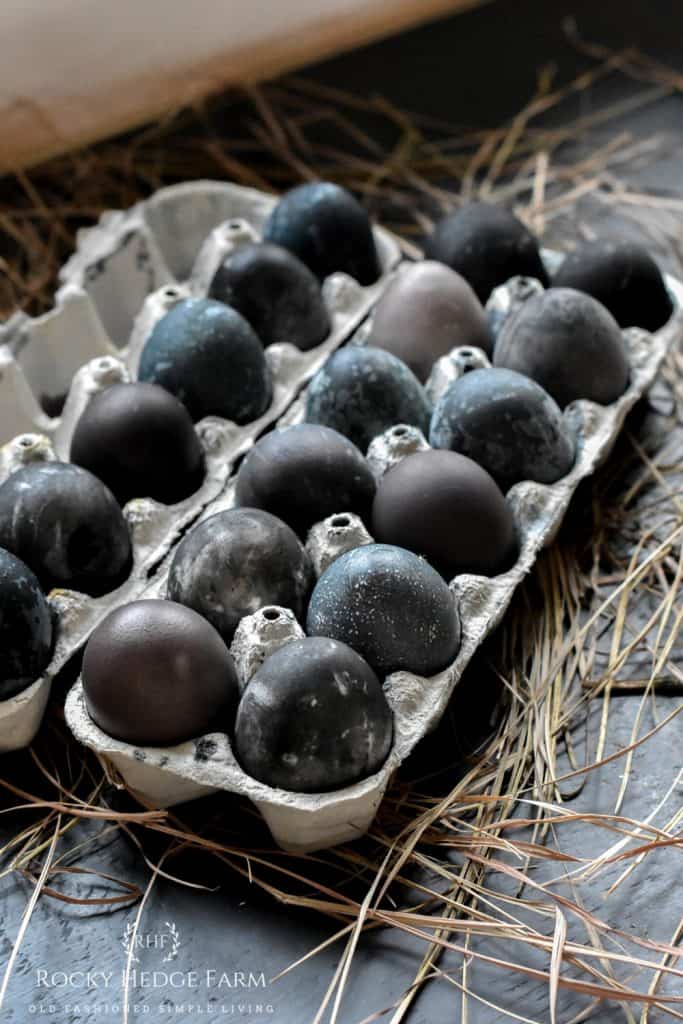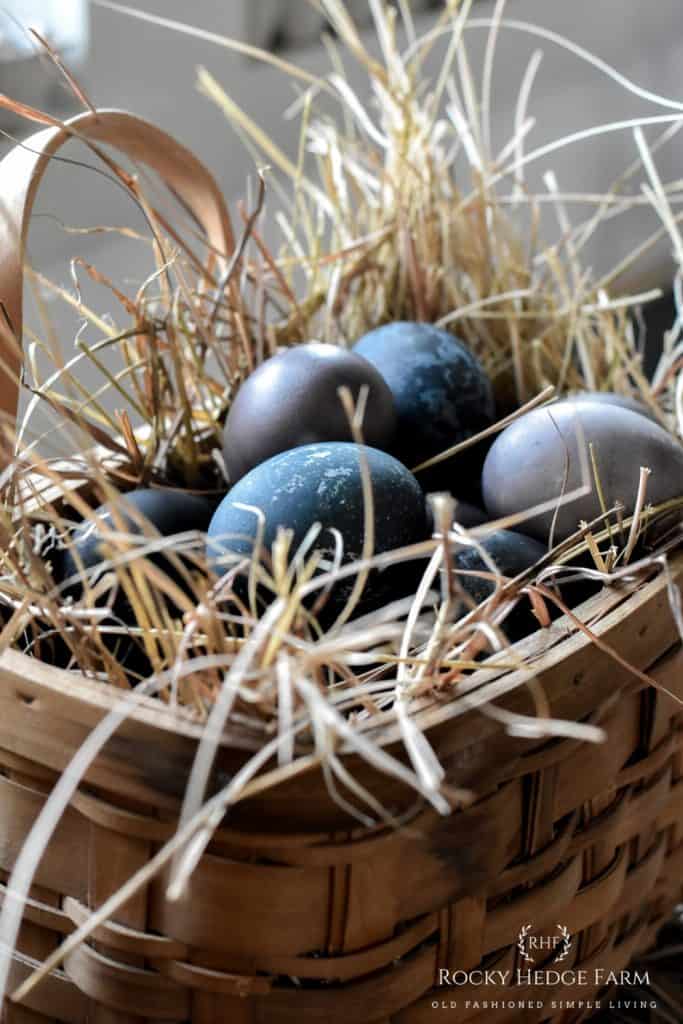How to Make Natural Easter Egg Dyes
In this post, learn how to make natural Easter egg dyes using simple, easy recipes. Use brown or white eggs, with dried flowers or herbs to create a safe dye for Easter eggs.

How to Make All Natural Dyes for Easter Eggs
When the children were younger, I would purchase the pre-packaged egg dye kits from the local store. We would gather around the table, each child with their own cup, colors and hard boiled eggs.
It was a great messy time but now that they older, I wanted to do some experimenting to see what we could use in our home to create natural dyes for our Easter Eggs.
As a home school mom, with two children still in grade school, this is a great science experiment. The children are able to use brown or white eggs, leave them in for various periods of time to see how the dye would change the egg color.
There are so many different spices or herbs I could have chosen to use, however, I was wanting to get dark color dyes. I chose to use activated charcoal, elderberries and dried hibiscus flowers for the dye process. You can find these items online or at a local health food store.

How to Prepare Eggs for Coloring
To prepare eggs for the dye process, follow my step by step instructions for the perfect, easy to peel, hard boiled egg.
STEP 1: Fill a Steamer Pot
Fill the bottom pot of the steamer set about 1/2 full of water. Then place the steamer pot, the one with the holes, on top of the bottom pot.
STEP 2: Add Eggs
Add eggs to the top steamer pot. You can layer the eggs on top of each other but I have never stacked more than two layers high. Once the eggs are in the pot, place the lid on top.
STEP 3: Boil Water and Steam
Bring the water in the pot to a boil and steam the eggs for 20 minutes.
STEP 4: Rinse
Leave the eggs in the steamer, and sit the pot in the sink. Rinse the eggs with cool water. Once the eggs are cool, dry them off with a towel. They are now ready for the natural egg dye.

Natural Easter Egg Dyes for Dark Colored Eggs
To make natural dye for coloring Easter eggs, you will need to gather ingredients from your kitchen or local store. For our recipes, I am using:
The color of the eggs will vary depending on how concentrated the dye is. There will also be a difference between using brown or white eggs and how long the eggs are allowed to soak.
For best results, I suggest allowing the eggs to remain in the natural dye, overnight, in the refrigerator. To achieve lighter color eggs, allow them to remain in the dye for a lesser time period.
Natural Easter Egg Dye Recipes
What You Need:
- Eggs – brown or white
- White Vinegar
- Quart Glass Jars
- Spoons
- Fine Mesh Strainer
- Ingredients for the desired egg color – what we used is listed above
Step 1: Gather Non-Toxic Ingredients
You can use a wide array of non-toxic food ingredients for this project. The recipes below will give you blue, purple and black or gray eggs.
Step 2: Add Water
Add water to a saucepan large enough to hold the amount of water you need plus the ingredients to make the dye.
Step 3: Make the Dye
Bring the water to a boil and add the dye ingredients. As soon as the water starts to boil, turn the burner to the lowest setting. If you are using dried flowering herbs, simmer for 30 minutes. If using a dried powder, like activated charcoal, simmer for 10 minutes.
Step 4: Strain the Dye
For the dried flowering herbs, strain the dye through a fine mesh strainer, into a quart size jar. For any type of powder that dissolved into the water, there is no need to strain the dye.
Step 5: Add the Vinegar
Place 1 tbsp of vinegar per cup of dye into the quart size jar. I found that 2 tbsp of vinegar for each of my recipes worked well.
Step 6: Add Eggs
Using a spoon, gently add eggs into the dye. Eggs should be completely submerged into the dye.
Step 7: Place in Fridge
Transfer the eggs to the refrigerator while in the dye. Chill until the desired color is achieved.
Step 8: Dry Eggs
Once desired color is achieved, carefully remove the eggs from the dye. Then, allow them to dry. Store in the refrigerator until time to hide.

How to Dye Easter Eggs Black or Gray
What You Need:
- 3 cups water
- 1/3 cup activated charcoal
- 2 tbsp white vinegar
In a medium size pan, bring 3 cups of water to a boil. Add 1/3 cup activated charcoal. Simmer on low until charcoal is dissolved in water. Set aside to cool. Then, pour into quart size jar, add vinegar. Add hard boiled eggs.
The darkest colored egg was in the very bottom of the jar. The egg was in the jar for 12 hours. The spotted black/gray eggs were on top of the darkest egg but only in the mixture for 8 hours.
How to Dye Easter Eggs Purple
What You Need
- 3 cups water
- 1 1/2 cups dried elderberries
- 2 tbsp white vinegar
In a medium size pan, bring 3 cups of water to a boil. Add 1 1/2 cup dried elderberries. Simmer on low for 30 minutes. Strain the elderberries from the mixture. Allow the dye to cool. Then, pour into quart size jar, add vinegar. Add hard boiled eggs.
To achieve a light color of purple, leave the egg in the elderberry dye for 1-2 hours. The longer the egg is in the dye, the darker purple it will be.
How to Dye Easter Eggs Blue
What You Need
- 3 cups water
- 1 1/2 cups dried hibiscus flowers
- 2 tbsp vinegar
In a medium size pan, bring 3 cups of water to a boil. Add 1 1/2 cup dried hibiscus flowers. Simmer on low for 30 minutes. Strain the hibiscus flowers from the mixture. Allow the dye to cool. Then, pour into quart size jar, add vinegar. Add hard boiled eggs.
Natural Dyed Eggs with Flowers
Elderberries and Hibiscus are both dried flowers that we used to create a dye for the eggs. There are many other dried flowers that I would love to use in the future. Some of those at the top of my list are:
- Yarrow
- Chamomile
- Lavender
- Calendula
- Safflower
Have you ever tried making your own natural Easter egg dyes? What have been some of your favorite combinations? This was such a fun project for the children and I. We look forward to trying more combinations in the future.

Natural Easter Egg Dye Recipe

In this post, learn how to make natural Easter egg dyes using simple,
easy recipes. Use brown or white eggs, with dried flowers or herbs to
create a safe dye for Easter eggs.
Ingredients
- Hard Boiled Eggs – brown or white
- White Vinegar
- Quart Glass Jars
- Spoons
- Fine Mesh Strainer
- Ingredients for the desired egg color
Instructions
Gather Non-Toxic Ingredients
You can use a wide array of non-toxic food ingredients for this
project. The recipes below will give you blue, purple and black or gray eggs.
Add Water
Add water to a saucepan large enough to hold the amount of water you need plus the ingredients to make the dye.
Make the Dye
Bring the water to a boil and add the dye ingredients. As soon as the water starts to boil, turn the burner to the lowest setting. If you are using dried flowering herbs, simmer for 30 minutes. If using a dried powder, like activated charcoal, simmer for 10 minutes.
Strain the Dye
For the dried flowering herbs, strain the dye through a fine mesh
strainer, into a quart size jar. For any type of powder that dissolved
into the water, there is no need to strain the dye.
Add the Vinegar
Place 1 tbsp of vinegar per cup of dye into the quart size jar. I
found that 2 tbsp of vinegar for each of my recipes worked well.
Add Eggs
Using a spoon, gently add eggs into the dye. Eggs should be completely submerged into the dye.
Place in Fridge
Transfer the eggs to the refrigerator while in the dye. Chill until the desired color is achieved.
Dry Eggs
Once desired color is achieved, carefully remove the eggs from the
dye. Then, allow them to dry. Store in the refrigerator until time to
hide.
How to Dye Easter Eggs Black or Gray
3 cups water
1/3 cup activated charcoal
2 tbsp white vinegar
How to Dye Easter Eggs Purple
3 cups water
1 1/2 cups dried elderberries
2 tbsp white vinegar
How to Dye Easter Eggs Blue
3 cups water
1 1/2 cups dried hibiscus flowers
2 tbsp vinegar
Notes
Depending on how long you leave the eggs in the dye, will determine what color of eggs you will see. The longer an egg sits in the dye, the darker the color will be.









